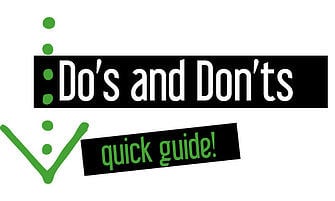 The human brain is a visual learner. Even when someone is reading text, that person is taking in visual data and translating it into meaning. Additionally, most people, around 65 percent, identify as visual learners. Effective eLearning courses should build upon the brain's natural inclination to take in knowledge in a visual form by incorporating images in eLearning courses.
The human brain is a visual learner. Even when someone is reading text, that person is taking in visual data and translating it into meaning. Additionally, most people, around 65 percent, identify as visual learners. Effective eLearning courses should build upon the brain's natural inclination to take in knowledge in a visual form by incorporating images in eLearning courses.
As with any strategy, there is a right way to do things and a wrong way. Images and visuals done incorrectly will cause harm rather than strengthen learning. But images incorporate and integrated into eLearning effectively, will bolster learning and lead to more student engagement and material retention.
When constructing effective eLearning courses, follow this simple guide on what to do and what not to do when using visuals:
1) Do use a variety of visuals.
The images and visuals in an eLearning course should take many forms allowing the brain to process information in a variety of ways. These can include charts, downloadable handouts, pictographs and even bullet points or numbered lists. These help the brain organize the information it's processing.
2) Do use words and pictures together.
When paired together, words and pictures communicate the same message in two ways, allowing learners to link the words and phrases together in their minds. In this way, you can get your message across even faster.
3) Do choose the right photo.
Select images that will resonate with your audience. They should reflect the audience's culture, values and backgrounds so the audience will connect with and respond to the photo rather than dismiss it.
4) Do use a consistent image style throughout the course.
This is a good graphic design principle as well. Consistency helps learners move from one task to the next, knowing there are certain aspects of the design that won't change. For examples, always use the same image to prompt discussion or show where learners need to take a quiz.
5) Do use the best quality settings you can to get the best image quality.
No one wants to look at grainy, pixelated pictures. Images shouldn't be blurry or of poor quality. It looks unprofessional and learners will likely leave the site for more effective eLearning courses. Ensure that visuals are always clear – it is better to not use them at all than ones of poor quality.
6) Don't copy and upload images from Google.
This violates copyright. Enough said.
7) Don't overload your courses with visual elements.
More visuals don't necessarily mean more learning. This makes a page become too cluttered and a learner can't decipher what images matter ro the course and what images do not. Only include critical images that promote learning. Before including any image in your course, ask yourself: Would this image help explain the content better? If the answer to this question is no, or even “maybe,” leave it out.
8) Don't add text to complicated images.
This will only further complicate the image. Either use a less confusing image or place your explanatory text on a different screen.
9) Don't include visuals for decoration only.
Visuals are not ‘wall paper’ to beautify the room. They are to support the learning, only. Save the scenic backgrounds for marketing materials. Effective eLearning courses should only include visuals that enhance learning, not that serve as a distraction. They should have a purpose, either to activate or build prior knowledge, to build mental models (associations) or even to support transfer of learning and motivation.
10) Don't use complex graphics.
This will only further complicate the image. Either use a less confusing image or place your explanatory text on a different screen. Sometimes a simple figure really can say it all. Keep in mind that visuals should help students understand the material at a glance.
Effective eLearning courses must rely on the visual expression of content to help learners master the content. Additionally, most people learn best visually anyway. Keep these tips in mind the next time you use visuals in your eLearning courses— your audience will thank you.
What other do's and don'ts would you add to this list?









